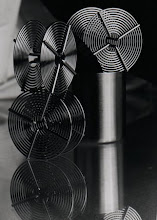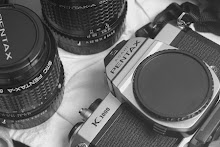
Nandina Berries
Pentax K200D, 55mm Takumar.
VIV 285HV, umbrella, camera left.
1/125, f/4, ISO 100. AP2.
Exposure was measured for background sky at 1/500, f/8, ISO 100.
Dropped two stops on shutter to hit the camera's max synch speed.
Opened up two stops on aperture to accept flash fill.
Doubling of the normal two stop underexposure for fill occurred because of distance from flash to subject and also an allowance for bouncing from the umbrella.
Since the apparent area of the emitted area is larger from the umbrella than it would be for a point emission from strait flash, an allowance had to be made for the distribution of light. In this instance, it was two more stops. [cf. Inverse Square Law of Light]
Rule of thumb would be a stop lost for the bounce and a stop lost for the spread. With film, there would have been an additional approximate half-stop lost for the gold of the umbrella, a change in temperature relative to daylight silver film sensitivity. [That specific loss would have been determined by the formulation and response of the specific emulsion used.]
This allowed us to make up for the four stop difference in the light from the sky and the light from the backlit leaves. If it had not been made, the plant would have appeared much darker.
# # #







No comments:
Post a Comment